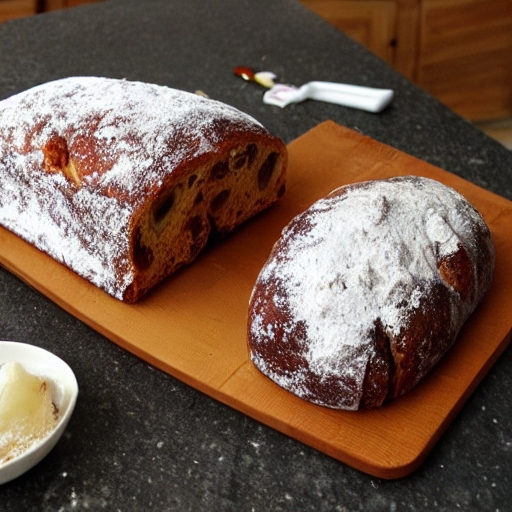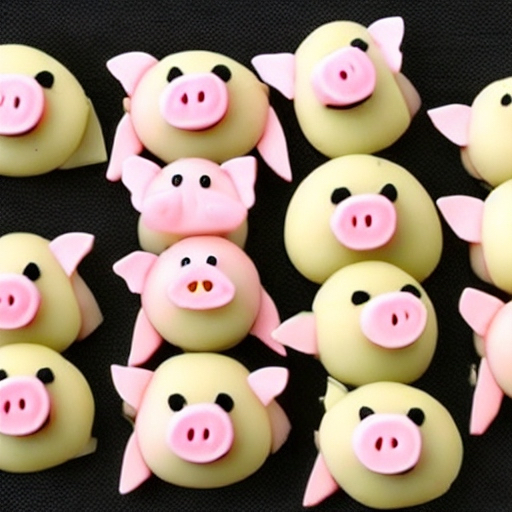Though marzipan might not have gained as much popularity in the United States, it is a delightful and sweet delicacy cherished in various regions worldwide. Today, on January 12, as we celebrate National Marzipan Day, we hope to change that perception.

Marzipan throughout the world

Serious Eats says that the origin of marzipan is often attributed to Lübeck, Germany. Legend has it that during a 15th-century famine when flour for breadmaking was scarce, the Lübeck senate ordered bakers to create a substitute. Using eggs, sugar, and almonds, resourceful bakers came up with the first recipe for marzipan. However, cities like Venice, Florence, Konigsberg, and more also claim to have invented marzipan, presenting similar stories with different dates.
Despite the unclear origin, marzipan has found favor in various cultures globally. It holds a traditional significance in weddings and religious feast days in Italy, Greece, and Cyprus. It is also a popular treat in the United Kingdom and France.

In Latin America, a marzipan-like treat, known as “mazapan,” replaces almonds with peanuts. Mexico introduces variations with pine nuts and pistachios. In the Middle East, marzipan is flavored with orange-flower water. Northern Europe, especially Germany, considers it lucky to receive a marzipan pig on Christmas or New Year’s Day. It is also found in the stollen, a popular German Christmas fruit bread of nuts, spices, and dried or candied fruit, coated with powdered sugar or icing sugar and often containing marzipan. Spaniards and Portuguese are also avid consumers, and Americans are likely familiar with the miniature fruit-shaped marzipan.
Are almond paste and marzipan the same?
Although they may seem similar, they are not. The biggest difference between almond paste and marzipan is the ratio of ground almonds to sugar. In addition to other ingredients, almond paste generally has an equal ratio of sugar to almonds. Whereas marzipan has a higher percentage of sugar than ground almonds – in most cases up to 75% more sugar.
Some recipes claim that you can use almond paste and marzipan interchangeably in certain recipes however, you will need to make adjustments to the amount of sugar in a recipe if you substitute marzipan for almond paste.
According to Tasting Table, the two ingredients can be interchanged, particularly when they are incorporated within the dish rather than being used like fondant. If your recipe specifies almond paste but you only have marzipan, lessen the sugar quantity to offset the marzipan’s higher sugar content. Conversely, if almond paste is what you have and the recipe calls for marzipan, increase the sugar amount.
However, the Food Network says, “The two ingredients are not interchangeable in recipes; however, in a pinch, you can turn almond paste into marzipan by adding some sugar and egg whites.”
As a best practice, it is best not to make substitutions. If you need almond paste – use almond paste and if a recipe calls for marzipan – use marzipan.
“Marzipan is essentially a paste of sugar and almonds, has been made in the Middle East and Mediterranean regions for centuries, and is especially prized as a sculptural material,” writes Harold McGee in “On Food and Cooking.” “It can be made by cooking almonds and syrup together and then cooling and crystallizing the mixture or ground almonds can be mixed with a pre-made fondant and powdered sugar. Egg white or gelatin is sometimes added to improve the binding.”
The German variety is a mixture of almonds and sugar ground coarse and heated until dry, and, after cooling, glucose and icing sugar are added. French marzipan is not cooked, but sugar is boiled with water and added to the almonds to render a finer, more delicate texture and whiter colour.
Distinguishing between the two is easiest by noting that marzipan possesses a firm texture, allowing it to be molded like clay and used for shaping. It can also serve a purpose similar to fondant, covering cakes. In contrast, almond paste is utilized as an ingredient within recipes. According to PastryClass, incorporating almond paste enhances richness and imparts a distinctive almond flavor to dishes.
Making Marzipan
If you cannot find marzipan or need it at the last minute, you can certainly make it. The two most common recipes found on creating marzipan from scratch either have ground almonds as the base or almond paste.
Method One
À La Mère de Famille’s recipe, which makes about one pound, calls for 1 3/4 cups of ground almonds or almond meal ground in a food processor until a fine powder. Then heat 1 cup of sugar, 1/4 cup light corn syrup, and 1/3 cup water until it registers 250 degrees Fahrenheit on a candy thermometer. With the food processor running, slowly add the hot sugar syrup until it forms a smooth paste. When cool, roll it into a log and store it in the refrigerator for up to one month. Although not necessary, the addition of 1/2 teaspoon of almond extract (we use Nielsen-Massey) helps boost the almond flavor.
Method Two
Chef Andy Chlebana, who was a member of the Club Coupe du Monde Team USA in 2013 and the coach of the 2023 team, has a recipe for marzipan utilizing pre-made almond paste.
This recipe will yield 4 pounds 12 ounces of marzipan. Using a paddle attachment mix 2 pounds 3 ounces (1000g) of almond paste with 6 ounces (180g) of glucose on a low speed. Begin adding the sifted confectioners’ sugar (2 pounds 3 ounces/1000g) to the mixture. You probably won’t need all of the confectioners’ sugar – just enough to form a soft dough. Wrap it tightly in plastic wrap and store in the refrigerator.
Method Three
In “Mastering the Art and Craft – Baking and Pastry” from the Culinary Institute of America, they have a recipe for marzipan for modeling and cake coverings, which is a similar recipe to Chef Chlebana’s, but with a few additions.
Their recipe, which makes a whopping 17 pounds 2 ounce/7.77kg of marzipan, starts by blending 7 pounds (3.18kg) of almond paste with 7 pounds (3.18kg) of confectioners’ sugar in a mixing bowl with a paddle attachment on a low speed for 2 minutes. Then add 2 pounds (910kg) of fondant, 1 pound (450g) of glucose syrup, and 2 ounces (60g) of brandy until it is just mixed and smooth.
Place the marzipan in an airtight container and store it in the refrigerator. If you want to use the marzipan to cover a cake you will need approximately 1 pound 4 ounces (570g) for a 10-inch (25cm) cake.
Should you intend to craft fruits, animals, or other molded shapes with the marzipan, the recipe can be modified to achieve a slightly firmer consistency, ensuring it holds its shape effectively.
Incorporate extra confectioners’ sugar into the marzipan manually until the desired consistency is reached. Exercise caution to avoid excessive kneading, as overworked marzipan may develop an oily texture and lose its smooth, clay-like consistency. If this occurs, knead a small amount of simple syrup to rebind the oils and solids. Additionally, more confectioners’ sugar can be added to restore the original consistency.
